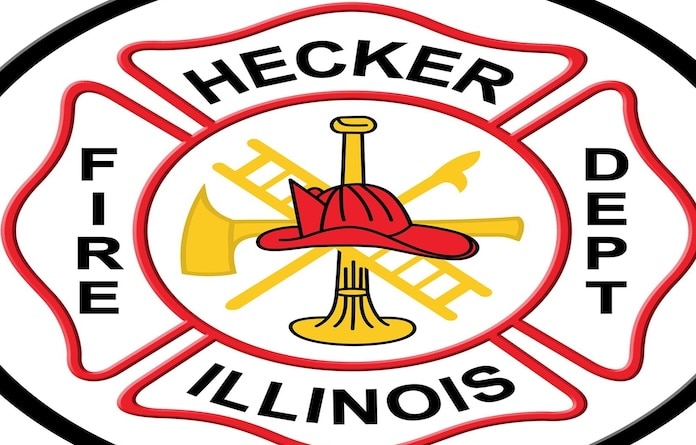Mounds study has strong local connection
Most everyone in this region is familiar with Cahokia Mounds, but did you know Native American burial grounds extend in all directions of the region from there, including south into Monroe County?
About 65 people came to the Interpretive Center at Cahokia Mounds near Collinsville last Wednesday evening to hear about a study being conducted by Heartlands Conservancy to identify and preserve the many burial mound groups of the region.
Heartlands Conservancy is partnering with interested groups and individuals to get their arms around these sites, first identifying them, then preserving them and bringing them to public attention and interest.
Currently, designation as a National Historic Landmark and various state laws protect Cahokia Mounds. But it is the conservancy’s wish to elevate that designation for both Cahokia Mounds and numerous other mound sites on both sides of the river. The goal is to create an interconnected network of historical sites that would tell the story of this region 1,000 years ago.
At this point, both the National Park Service and Illinois Historic Preservation Agency are being engaged together in the effort.
Recent finds in the old stockyards area of East St. Louis revealed a massive village that may have been home to as many as 5,000 people centuries ago. This became known as a result of archaeological surveys conducted in preparation for the new Mississippi River bridge.
Identifying and preserving the mound cities, towns and villages, and how they fit together, will help preserve the history of southwestern Illinois, conservancy officials say.
To date, local organizations including the Oerter and Kutterer foundations have been instrumental in providing funds to push this project forward.
The mounds that marked Native American towns and villages surrounding the “capital city” of Cahokia Mounds extend into Monroe County. They are mostly on private property, and many are well preserved by caring property owners. In fact, several can be seen from Interstate 255, and more closely by driving back roads in the bottoms.
Washington University archaeologist Dr. John Kelly, one of the foremost experts on the prehistoric study of the region, took the Republic-Times on a tour of one of the most significant clusters of mounds in the greater Cahokia Mounds area — the Pulcher Mounds Group in the bottoms southwest of Dupo. Other mounds are found nearby in a wooded area of the Indian Hill subdivision in Columbia and on the bluff overlooking I-255.
The Pulcher Mounds were noted by early French and English settlers here in the 1700s.
Historical writings note that the Kaskaskia-Cahokia Trail ran right through the middle of the mounds. Unlike today’s interstate travelers moving 65 miles per hour, earlier people moved at a more sedate pace on horse or foot and saw the mounds more closely.
Kelly told how the approximately 100-acre area was home to as many as 1,000 Native Americans identified as members of the Mississippian culture. They occupied the area for at least 100 years, he said.
The round mounds are most likely burial sites, he said. But the largest mound, weathered and rounded today, was most likely square or rectangular, he said – much like the large Monks Mound near Collinsville. Perhaps it has a ceremonial purpose. Today, there are some seven mounds in the group, although there may have been as many as 11 at one time.
Kelly and fellow Washington University colleagues, including more senior archaeology students, have conducted numerous investigations of the area bounded by Fish Lake, the Union Pacific Railroad, Bixby Road and the Davis Street Ferry site. Much effort has gone into recording signs of earlier habitation and uses of the area by its citizens. The area has also been the subject of numerous earlier investigations.
“It appears this site was directly related to the larger Cahokia Mounds site, most likely in a friendly, productive manner,” Kelly said.
It is well known that trade and commerce was carried out between Mississippian-era people. Perhaps the rich soil of the bottoms made that area a prime agricultural site for growing of grains for trade. Fish and other wildlife also doubtless abounded in the area.
Of the mound groups in and immediately adjacent to Monroe County, the Pulcher Group is perhaps the most significant.
It is one of seven groups currently being targeted by Heartland Conservancy for possible elevation to national recognition.
“You can think of it as St.Louis with the surrounding communities providing support to the city,” explained Suzanne Kutterer-Siburt, who is part of the project team. “With ‘The Mounds – America’s First Cities’ project, over 548 mounds have been located thus far. More existed but have been destroyed. This is a very large culture.”
In addition to the intellectual grounds for preserving these sites, a concerted effort to identify, mark and preserve these sites could bring greater tourism and employment, as well as consequent money to the entire region.
“We hope for a greater commitment on local people’s parts,” Kelly said.
Fortunately, several families in the bottoms area have shown a great sense of stewardship for the historical mounds, protecting and preserving them well.
Sometimes, development can outstrip those efforts. The Indian Heights development in western Columbia emerged and grew rapidly. Kelly told how they rushed to fully investigate the area, but simply ran out of time. Mounds still exist there in a wooded area.
As Kelly led the tour of the area, driving along old Route 3 east of I-255, he pointed to the top of the bluff.
“See where the trees arch higher at the end?,” he asked, pointing up. “That’s another mound — Sugarloaf East.”
In a short afternoon drive, with several stops to take photos and see things at a more leisurely pace, it became obvious that Monroe County has substantial contributions to make in recording and preserving the history of the region.
Hopefully, as information is discovered and brought to light in school and community events, local citizens will realize how fortunate they are to find themselves in what amounts to the cradle of North American prehistoric civilization.
They may also realize that it is good, from time to time, to slow down and inhale the past history and culture that predates us here – to “smell the roses,” so to speak.
For more information on the ongoing mounds project, visit online at www.HeartlandsConservancy.org.






